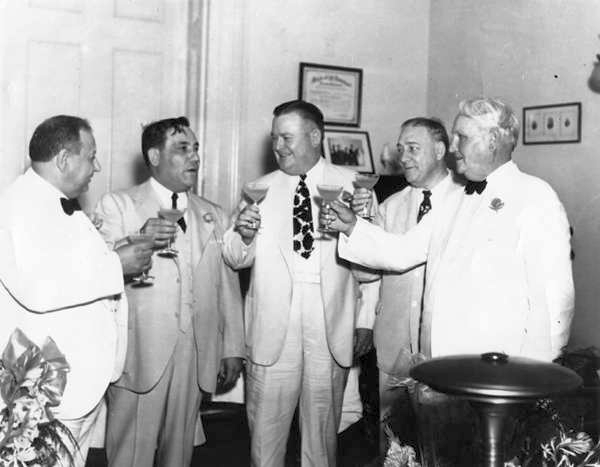|
Today in New Orleans History |
|
|
July 15


 To receive an update for each day in New Orleans history,
join our facebook page - Today in New
Orleans History.
Pharmacist Fred A. Earhart was elected to New Orleans' commission council
in 1930, where he served as Commissioner of Public Utilities. Along with A. Miles Pratt and Jesse S. Cave, Earhart was one
of three acting mayors who served in the summer of 1936 between the resignation of Mayor T. Semmes Walmsley and innauguration of
Robert Maestri. After his day as acting mayor Earhart continued to serve as Commissioner of Public Utilities in
the Maestri and Chep Morrison's administrations. Morrison called Earhart the "Father of the Union Passenger Terminal"
and the accompanying railroad grade separation program in the city. Earhart was elected a state representative
in 1912 and to the Louisiana senate in 1920. In 1930 he was elected to the city commission council (which
would later be replaced by the city council) where he first advocated for separated street and railroad corridors
and a centralized railroad passenger terminal. In 1937 he published a report/study outlining how this might be accomplished.
Never giving up on the plan, in 1945 he urged Mayor Maestri to appoint a railroad terminal board to engineer the plan.
The following year he proposed to Mayor Morrison the closing of the New Basin Canal and other changes which would make
his plan feasible. Earhart died on November 2, 1948 at his home at 731 Napoleon Avenue at the age of 73, before seeing
his plan come to fruition. Born in 1875 in New Orleans, Earhart was educated in the city's public
schools and the New Orleans College of Pharmacy. He was editor of a German language newspaper and served in the
Navy during the Spanish-American war, and in the intellegnce service during World War I. He opened his first pharmacy,
at the age of 21, on Eighth Street at Chippewa and would go on to open nine more. He taught in the pharmacy school at
Loyola and served as secretary on the state Board of Pharmacy, president of the State Pharmacy Association, and president
of the National Pharmacy Association. He was instrumental in establishing the Pharmaceutical Museum on Chartres Street.
Upon his death, his body was laid at state in the Grand Consistory of Louisiana at 619 Carondelet Street
and flags flew at half-staff at city buildings. Earhart Boulevard and the Earhart Expressway are named after him. (New Orleans
Public Library photograph -- celebration of Maestri's first anniversary in office, City Hall, August 17, 1937.)  To receive an update for each day in New Orleans
history, join our facebook page
- Today in New Orleans History
Félix de Courmont, a French Creole immigrant from the West Indies who arrived in Louisiana
ca. 1841, founded Le Taenarion: Journal du Progrès, a French-language tri-weekly newspaper first published on October
4, 1846. After producing 16 issues of satirical verse on local politics and cultural events it was discontinued in November.
From July 15, 1846 to January 1, 1847 he published 12 issues of Le Taenarion, Satires Périodiques
magazine. New Orleans' bankers and female prostitutes were his primary subjects of discourse. Source: http://lahistory.org/site20.php |
|
|

To receive an update for each day in New Orleans history,
join our facebook page - Today in New
Orleans History.
Analytics |


